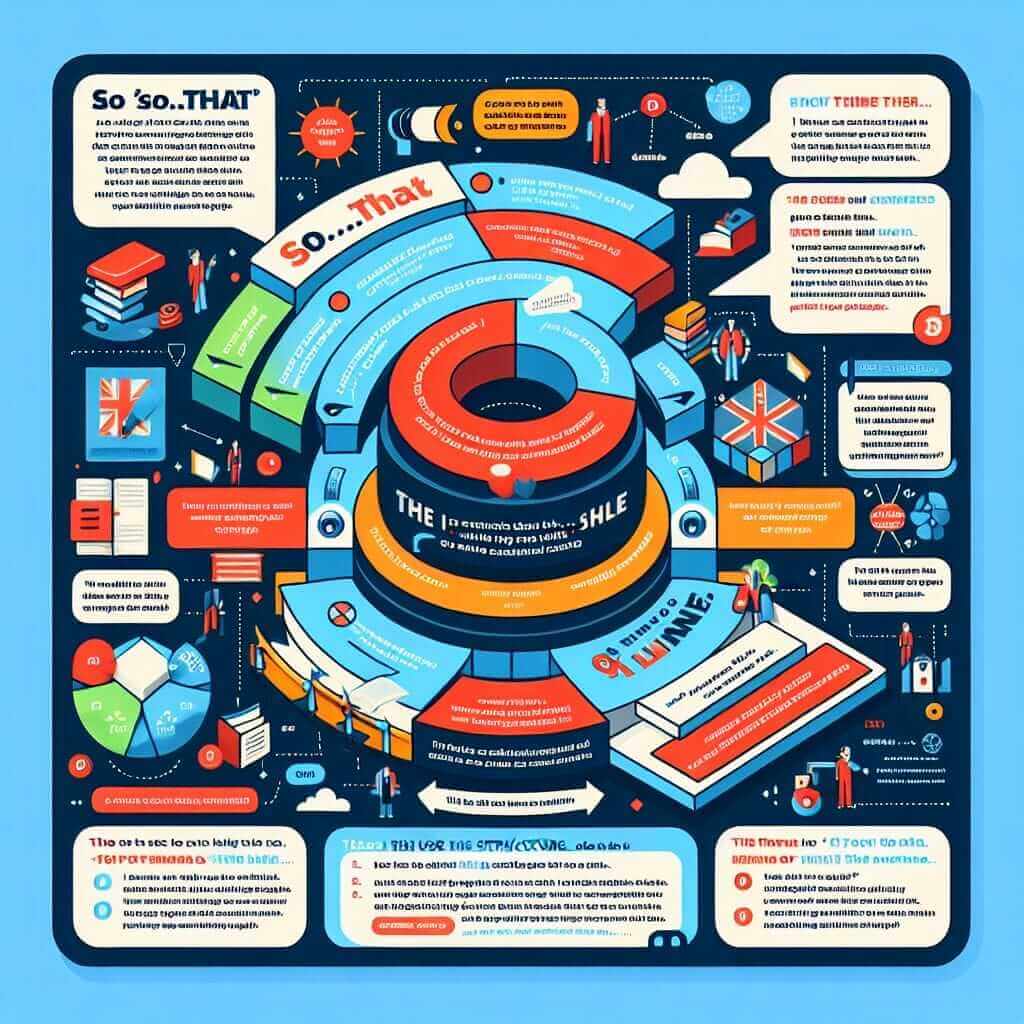The phrase “so impactful was the speech that it echoed for days” showcases a powerful grammatical structure that can elevate your IELTS writing: inversion with “so…that.” While it might seem complex at first, mastering this structure can add sophistication and emphasis to your sentences, helping you achieve a higher band score.
Here are a few examples of how you might encounter or use this structure in different sections of the IELTS:
Speaking Part 2: “The concert was so captivating that I completely lost track of time.”
Writing Task 1: “The increase in online sales was so dramatic that it outstripped all previous records.”
Writing Task 2: “The impact of climate change is so severe that it requires immediate global action.”
In each example, the “so…that” structure emphasizes the degree of something by placing it at the beginning of the sentence, immediately grabbing the reader’s attention.
Understanding “So…That”
The “so…that” structure is used to express a cause-and-effect relationship, highlighting the intensity of the cause and its significant consequence. In simpler terms, it emphasizes just how strong the cause is by showing its powerful effect.
Frequency in IELTS
While not overly common, using “so…that” effectively demonstrates a strong command of grammatical structures, which is a key factor in achieving a Band 7 or higher. Examiners are looking for your ability to use a range of structures accurately and appropriately.
Constructing and Using “So…That”
Here’s the basic formula for this structure:
So + adjective/adverb + auxiliary verb + subject + main verb + that + result clause.
Let’s break it down:
- “So”: This word signals the start of the structure and emphasizes the adjective or adverb that follows.
- Adjective/Adverb: This describes the intensity or degree of the cause.
- Auxiliary Verb: This verb agrees with the subject and tense of the sentence (e.g., was, is, were, have, had).
- Subject: The person or thing performing the action.
- Main Verb: The main action of the sentence.
- “That”: This conjunction connects the cause to its effect.
- Result clause: The outcome or consequence of the intense cause.
Applying “So…That” in IELTS Writing
Writing Task 1 (describing a graph):
“So significant was the increase in online shopping that traditional retail stores experienced a sharp decline.”
In this example, “so significant” emphasizes the large degree of the increase, and the “that” clause reveals the powerful effect on traditional stores.
Writing Task 2 (expressing an opinion):
“Some argue that social media has become so pervasive that it is detrimental to genuine human connection.”
Here, “so pervasive” stresses the widespread nature of social media, and the “that” clause presents a strong consequence – a potential harm to real-life relationships.

Achieving Higher Bands with “So…That”
- Variety is Key: While “so…that” is effective, avoid overusing it. Use it strategically to highlight specific points and showcase your range.
- Formal Tone: This structure is generally more formal, making it suitable for Writing Task 2 or formal discussions in Speaking Part 3.
- Combine with other structures: For even greater impact, use “so…that” alongside other complex structures to demonstrate advanced grammatical control. For example:
“So rapidly has technology advanced that it has fundamentally reshaped the way we live, work, and interact with the world, leading to both unprecedented opportunities and unforeseen challenges.”
Common Errors to Avoid
- Incorrect Word Order: Pay close attention to the inverted structure. The auxiliary verb must come before the subject.
- Missing “That”: The conjunction “that” is essential to connect the cause and effect.
- Overuse: Using “so…that” too often can make your writing sound repetitive and unnatural.
Conclusion
Mastering the “so…that” structure can significantly enhance the impact and sophistication of your IELTS writing. By understanding its construction, practicing its use in various contexts, and being mindful of potential pitfalls, you can confidently incorporate this powerful tool into your writing to achieve your desired band score. Remember, consistent practice and feedback are key to mastering any grammatical concept!